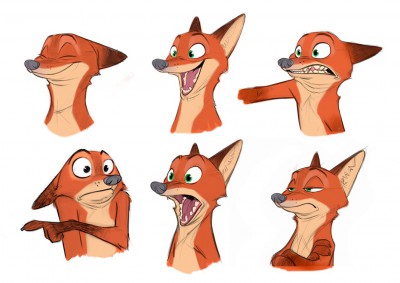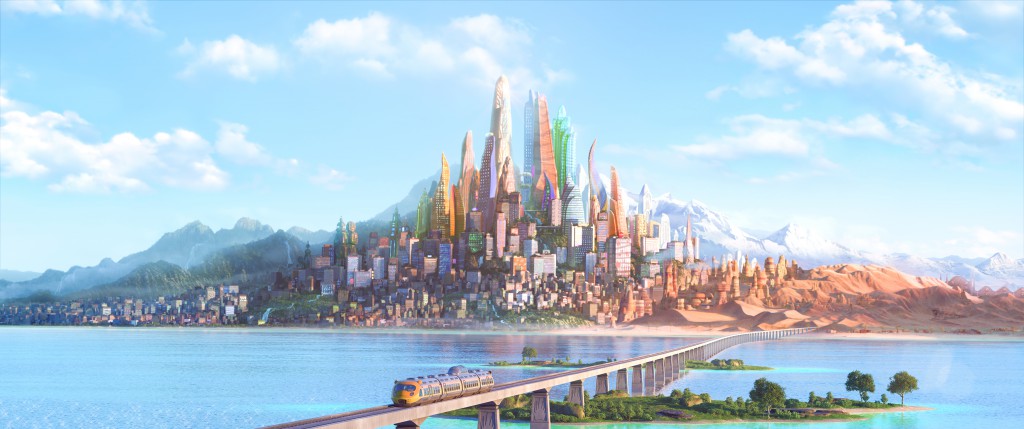Zootopia Calling Part 2: Creating a Whole New World
 Back in Walt Disney's era of making animated films, he always stressed that the story was the most important part of the process, a tradition that continues to this day with Disney's upcoming animated feature Zootopia. On a recent trip to Disney's temporary Tujunga studio, I got the chance to sit in the story room where this new breed of Disney film was created. With just four months until the release date, they had only recently locked down the final story.
Back in Walt Disney's era of making animated films, he always stressed that the story was the most important part of the process, a tradition that continues to this day with Disney's upcoming animated feature Zootopia. On a recent trip to Disney's temporary Tujunga studio, I got the chance to sit in the story room where this new breed of Disney film was created. With just four months until the release date, they had only recently locked down the final story.
Zootopia takes place in an anthropomorphic animal metropolis where humans don't exist. Judy Hopps is a bunny with big dreams of being a police officer. When her big break finally comes, she is forced to partner with Nick Wilde, a sly fox with a firm belief that you are who you were born to be and no amount of determination can change that. Will these polar opposites be able to solve the case in time to make Judy's dreams come true?

"The only thing that you know is that everything changes," explained writer and co-director Jared Bush when talking about the process behind creating an original story for a Disney animated film. For an example of how much the story can change, he presented multiple versions of a scene where a defeated Judy Hopps returns to her tiny apartment after her first day on the job. The original version seemed fine, but the story team explained that it slowed the film's momentum down when they first looked at it. Then they modified it to be funnier, but it lacked warmth. In the case of this particular scene, the third time was the charm.

When it came to designing the characters, the creative team made the choice to dress all of the animals in clothes and plant two feet flat on the ground. To accomplish this, animal anatomy had to be blended with human anatomy, but the animators were tasked with keeping the animal's movements realistic to how these creatures actually move. Facial designs had to allow for a wide range of expressions and a new device, jokingly named iGroom, had to be created so the animators could style each character's fur. And to make the fur look real, the lighting team had to bounce light off character's from multiple directions.

The city of Zootopia uses a hub and spoke model, an unintentional homage to Disneyland. Architectural shapes were inspired animals, which is why some buildings curve like horns and other feature stripes or spots. A German automobile designer was brought onto the project, which helps the city have an international feel with lots of American, European and South American building styles.
 Music is a big part of every Disney animated film and Zootopia is no exception, but this film is not a musical. Instead, the music comes from the city's most famous singer, Gazelle, voiced by Shakira. Gazelle's inspirational song "Try Everything" becomes Judy Hopps' personal power anthem, a catchy tune written by Sia Fuller ("Chandelier", "Titanium"). When Gazelle was first conceived, she was just a generic pop star. But once Shakira signed on, the real life singer inspired the story team to give the character more depth, making her more of a humanitarian just like her voice actress.
Music is a big part of every Disney animated film and Zootopia is no exception, but this film is not a musical. Instead, the music comes from the city's most famous singer, Gazelle, voiced by Shakira. Gazelle's inspirational song "Try Everything" becomes Judy Hopps' personal power anthem, a catchy tune written by Sia Fuller ("Chandelier", "Titanium"). When Gazelle was first conceived, she was just a generic pop star. But once Shakira signed on, the real life singer inspired the story team to give the character more depth, making her more of a humanitarian just like her voice actress.
Disney's Zootopia is still a little over a month from release and comes out on March 4th. Be on the lookout for part 3 of "Zootopia Calling," where I'll dive deep into the animation process and what it took to make Zootopia feel real. One thing's for sure, the teaser trailer's claim that this film is "like nothing you've ever seen be-fur" appears to be spot-on (pun intended).


